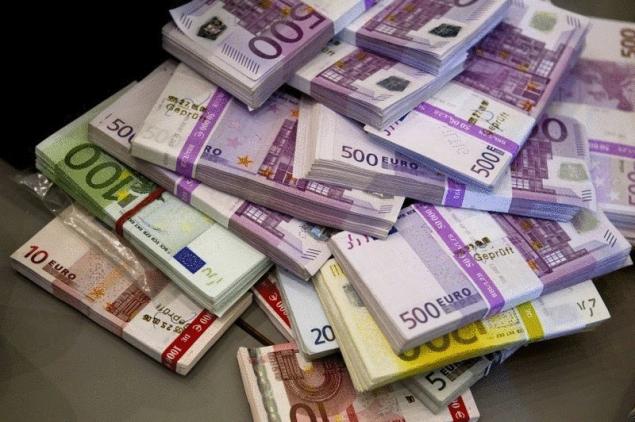534
The richest economy in the world
The richest economy in the world
Money impact on virtually every aspect of daily life — just about everything we need in one form or another depends on the money. Throughout history money has taken many forms — shells, strips of leather, even livestock were used as early systems of currency. The development of the monetary system was in the past one of the key indicators of the impact of Empire, power and samostiynosti. This trend continues to this day, and leading and most innovative countries are also the richest. Immediately struck by the fact that some of the richest countries have experienced particularly high rates of poverty and deep income inequality. This means that wealth at the national level does not necessarily imply security of the population. According to the world Bank, the 12 largest economies in the world account for two-thirds of the world economy. This list includes the 10 richest countries of 2014 based on pure girth of their economic systems.
India: $2.0 trillion
India is celebrated as the 10th richest economy in 2014, with purchasing power of $2.0 trillion. However, densely populated country has a very low GDP per capita, which is only 4,000$. GDP India ranks only 169th place out of 228 countries. Despite the impressive economic wealth of India, a huge 29.8 percent of Indian citizens live below the poverty line.

Russia: $2.1 trillion
Russia's economy has a purchasing power of $2.1 trillion, but the country occupies the 77th place in the ranking of GDP per capita, with $18 100 per person. In Russia, 11 percent of citizens live below the poverty line.

Italy: $2.2 trillion
Italy's economy is estimated at $2.2 trillion. GDP per capita in this country is 29,600$, placing the country in 51st place in the world. However, Italy has a relatively high level of poverty, with 29.9 per cent of Italians living below the poverty line.

Brazil: $2.2 trillion
With the same rate as in Italy, the Brazilian economy is estimated at $2.2 trillion. This year Brazil hosted the world Cup, but it did not rid the country of problems, both social and economic. GDP per capita in this country is low 12,100$ falling even in the first hundred rating. 21.1 percent of Brazilians currently live below the poverty line.

UK: $2.8 trillion
The United Kingdom has a strong economy, estimated at $2.8 trillion, according to the purchasing power in 2014. With a relatively high GDP per capita of $37 300, the United Kingdom occupies the 34th place in the world. 16.2 percent of people in this country live below the poverty line.

France: $2.2 trillion
In France, purchasing power is $2.9 trillion. The country ranks 39th highest GDP per capita, which is 35,700$. In France the relatively low level of poverty, with 7.9 per cent of French people living below the poverty line.

Germany: $3.9 trillion
The purchasing power of Germany reaches an impressive $3.9 trillion, making it the richest economy among all European countries. Germany also occupies 29-e a place on the GDP per capita of $39 500. 15.5 percent of Germans live below the poverty line, which is a pretty large percentage for such highly developed countries.

Japan: $4.8 trillion
With purchasing power of $4.8 trillion, Japan holds the third place in the list of the richest economic systems. GDP per capita in Japan is $37 100 per capita, putting the country in 36th place in the list. In 2010, 16 percent of Japanese citizens live below the poverty line.

China: the $10 trillion
With the rapidly growing economy, the purchasing power of China reached $10.0 trillion. But from the point of view of GDP per capita is not a world leader. China ranked only 121st in terms of GDP per capita, with a low at 9,800$. Only 6.1 percent of Chinese citizens live below the poverty line in this country, but it is worth considering that in 2013, China set a new poverty line in 3,630$ per person per year. Every country in this list has their own measure of poverty.

US: $17.5 trillion
With $17.5 trillion in purchasing power, the United States continues to occupy first place among the richest economies in the world. This level of financial well-being is complemented by a relatively high GDP per capita of $52 800, providing US in 14th place in the list. In 2010, 15.1 percent of Americans lived below the poverty line. The US unequivocally takes its place among the richest countries in the world.

Source: lifeglobe.net/
Money impact on virtually every aspect of daily life — just about everything we need in one form or another depends on the money. Throughout history money has taken many forms — shells, strips of leather, even livestock were used as early systems of currency. The development of the monetary system was in the past one of the key indicators of the impact of Empire, power and samostiynosti. This trend continues to this day, and leading and most innovative countries are also the richest. Immediately struck by the fact that some of the richest countries have experienced particularly high rates of poverty and deep income inequality. This means that wealth at the national level does not necessarily imply security of the population. According to the world Bank, the 12 largest economies in the world account for two-thirds of the world economy. This list includes the 10 richest countries of 2014 based on pure girth of their economic systems.
India: $2.0 trillion
India is celebrated as the 10th richest economy in 2014, with purchasing power of $2.0 trillion. However, densely populated country has a very low GDP per capita, which is only 4,000$. GDP India ranks only 169th place out of 228 countries. Despite the impressive economic wealth of India, a huge 29.8 percent of Indian citizens live below the poverty line.

Russia: $2.1 trillion
Russia's economy has a purchasing power of $2.1 trillion, but the country occupies the 77th place in the ranking of GDP per capita, with $18 100 per person. In Russia, 11 percent of citizens live below the poverty line.

Italy: $2.2 trillion
Italy's economy is estimated at $2.2 trillion. GDP per capita in this country is 29,600$, placing the country in 51st place in the world. However, Italy has a relatively high level of poverty, with 29.9 per cent of Italians living below the poverty line.

Brazil: $2.2 trillion
With the same rate as in Italy, the Brazilian economy is estimated at $2.2 trillion. This year Brazil hosted the world Cup, but it did not rid the country of problems, both social and economic. GDP per capita in this country is low 12,100$ falling even in the first hundred rating. 21.1 percent of Brazilians currently live below the poverty line.

UK: $2.8 trillion
The United Kingdom has a strong economy, estimated at $2.8 trillion, according to the purchasing power in 2014. With a relatively high GDP per capita of $37 300, the United Kingdom occupies the 34th place in the world. 16.2 percent of people in this country live below the poverty line.

France: $2.2 trillion
In France, purchasing power is $2.9 trillion. The country ranks 39th highest GDP per capita, which is 35,700$. In France the relatively low level of poverty, with 7.9 per cent of French people living below the poverty line.

Germany: $3.9 trillion
The purchasing power of Germany reaches an impressive $3.9 trillion, making it the richest economy among all European countries. Germany also occupies 29-e a place on the GDP per capita of $39 500. 15.5 percent of Germans live below the poverty line, which is a pretty large percentage for such highly developed countries.

Japan: $4.8 trillion
With purchasing power of $4.8 trillion, Japan holds the third place in the list of the richest economic systems. GDP per capita in Japan is $37 100 per capita, putting the country in 36th place in the list. In 2010, 16 percent of Japanese citizens live below the poverty line.

China: the $10 trillion
With the rapidly growing economy, the purchasing power of China reached $10.0 trillion. But from the point of view of GDP per capita is not a world leader. China ranked only 121st in terms of GDP per capita, with a low at 9,800$. Only 6.1 percent of Chinese citizens live below the poverty line in this country, but it is worth considering that in 2013, China set a new poverty line in 3,630$ per person per year. Every country in this list has their own measure of poverty.

US: $17.5 trillion
With $17.5 trillion in purchasing power, the United States continues to occupy first place among the richest economies in the world. This level of financial well-being is complemented by a relatively high GDP per capita of $52 800, providing US in 14th place in the list. In 2010, 15.1 percent of Americans lived below the poverty line. The US unequivocally takes its place among the richest countries in the world.

Source: lifeglobe.net/
10 oldest trees in the world
Exercises of the "5 Tibetans"— just 15 minutes a day for Your perfect shape























